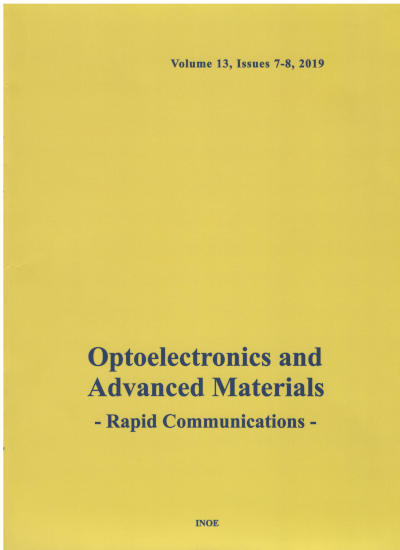Abstract
CsPbBr3 quantum-dots were successfully prepared in fluorine doped borosilicate microcrystals with different concentrations.
The crystal structure of the perovskite quantum-dots was determined by XRD. The morphology of perovskite quantum-dots
was characterized by TEM. The fluorescence characteristics were analyzed by fluorescence spectrum and CIE chromaticity
coordinate. The XRD patterns show that the perovskite quantum-dots microcrystals were successfully doped in the
borosilicate microcrystals. The TEM results show that CsPbBr3 quantum-dots are uniformly distributed in borosilicate
microcrystals. Under the excitation of 360 nm ultraviolet light, the CsPbBr3 quantum-dots exhibit strong green emission at
519 nm. The lifetime decay of quantum-dot crystallites increased from 4.04 ns to 14.42 ns, and the PLQY reached 44.81%.
Therefore, the obtained quantum-dots can be used in the powder solid-state light-emitting devices with high light efficiency
and long-life span.
Keywords
CsPbBr3
, Perovskite quantum-dots microcrystals, F
-
doping, Luminescent properties.
Citation
YONGXIA LI, HAOWEN BAI, JIANG WU, GUANYING CAO, YANJIE ZHANG, The green light emission of CsPbBr3 quantum-dots microcrystals with different concentrations of F - doping, Optoelectronics and Advanced Materials - Rapid Communications, 16, 11-12, November-December 2022, pp.545-552 (2022).
Submitted at: Jan. 19, 2022
Accepted at: Dec. 5, 2022
